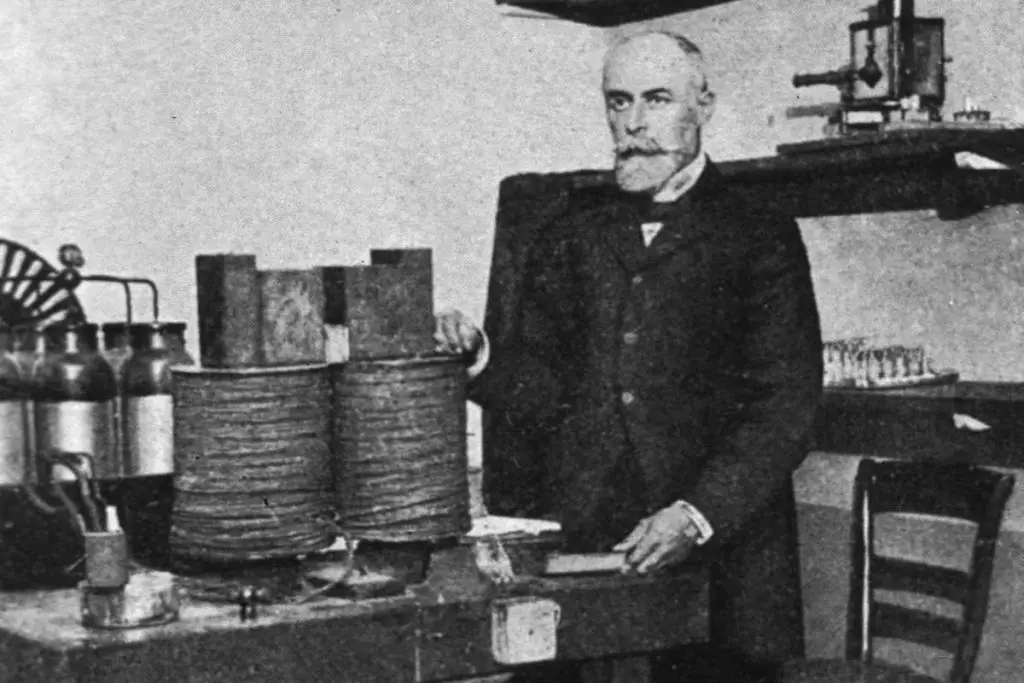On March 1, 1896, French physicist Henri Becquerel (15 December 1852 – 25 August 1908) accidentally discovered radioactivity.
March 1 story of what happened this day in Science, Technology, Astronomy, and Space Exploration history.
Becquerel’s accidental discovery came about while he was studying the phenomenon of fluorescence.
He had been experimenting with various types of fluorescent materials, including uranium salts, which he believed emitted a type of invisible radiation that caused the fluorescence. He wanted to test this theory, so on February 26, 1896, he placed a piece of uranium salt on top of a photographic plate covered with black paper. He exposed the setup to sunlight for a day and the plate did not become clouded. Then, he left it in a drawer for several days.
When he later (on March 1) examined the photographic plate, he found a fogged image of the uranium crystals resting on it, even though it had been covered with black paper and had not been exposed to sunlight directly. This indicated that the uranium salt was emitting a type of radiation that could penetrate through solid material and expose photographic plates.

On March 2, Becquerel reported that:
“…I kept the apparatuses prepared and returned the cases to the darkness of a bureau drawer, leaving in place the crusts of the uranium salt. Since the sun did not come out in the following days, I developed the photographic plates on the 1st of March, expecting to find the images very weak. Instead, the silhouettes appeared with great intensity…”
“One hypothesis which presents itself to the mind naturally enough would be to suppose that these rays, whose effects have a great similarity to the effects produced by the rays studied by M. Lenard and M. Röntgen, are invisible rays emitted by phosphorescence and persisting infinitely longer than the duration of the luminous rays emitted by these bodies. However, the present experiments, without being contrary to this hypothesis, do not warrant this conclusion. I hope that the experiments which I am pursuing at the moment will be able to bring some clarification to this new class of phenomena.”
This discovery led to further investigations into the phenomenon of radioactivity, which ultimately led to the development of nuclear physics and the harnessing of nuclear energy.
For his work on radioactivity, Becquerel was awarded the Nobel Prize in Physics in 1903, along with Marie and Pierre Curie.

Previous “almost” discovery of radioactivity
As often happens in science, radioactivity came close to being discovered nearly four decades earlier.
In 1857, the French photographic inventor Abel Niépce de Saint-Victor (26 July 1805 – 7 April 1870), who was studying photography under the French chemist Michel Eugène Chevreul (31 August 1786 – 9 April 1889), observed that uranium salts could darken photographic emulsions. This was really a close brush with the discovery of radioactivity.
By 1861, Niepce de Saint-Victor had realized that uranium salts emit “invisible” radiation. Edmond Becquerel, the father of Henri Becquerel, was acquainted with Niepce de Saint-Victor.
In 1868, Edmond published a book called “La lumière: ses causes et ses effets” (Light: Its causes and its effects). On page 50 of volume 2, Edmond referenced Niepce de Saint-Victor’s observation that objects exposed to sunlight could still expose photographic plates even in the dark. Edmond also noted that while the effect was reduced by obstructions between the object and the photographic plate, it increased when the sun-exposed surface was covered with substances easily altered by light, such as uranium nitrate.
March 1 in Science, Technology, Astronomy, and Space Exploration history
- 1982: Venera 13 became the first spacecraft to record sounds on another planet (Venus)
- 1896: Henri Becquerel discovered radioactivity
Sources
- Henri Becquerel on Wikipedia
- Moon Landings: All-Time List [1966-2025] - February 2, 2025
- What Is Max-Q and Why Is It Important During Rocket Launches? - January 16, 2025
- Top 10 Tallest Rockets Ever Launched [2025 Update] - January 16, 2025
